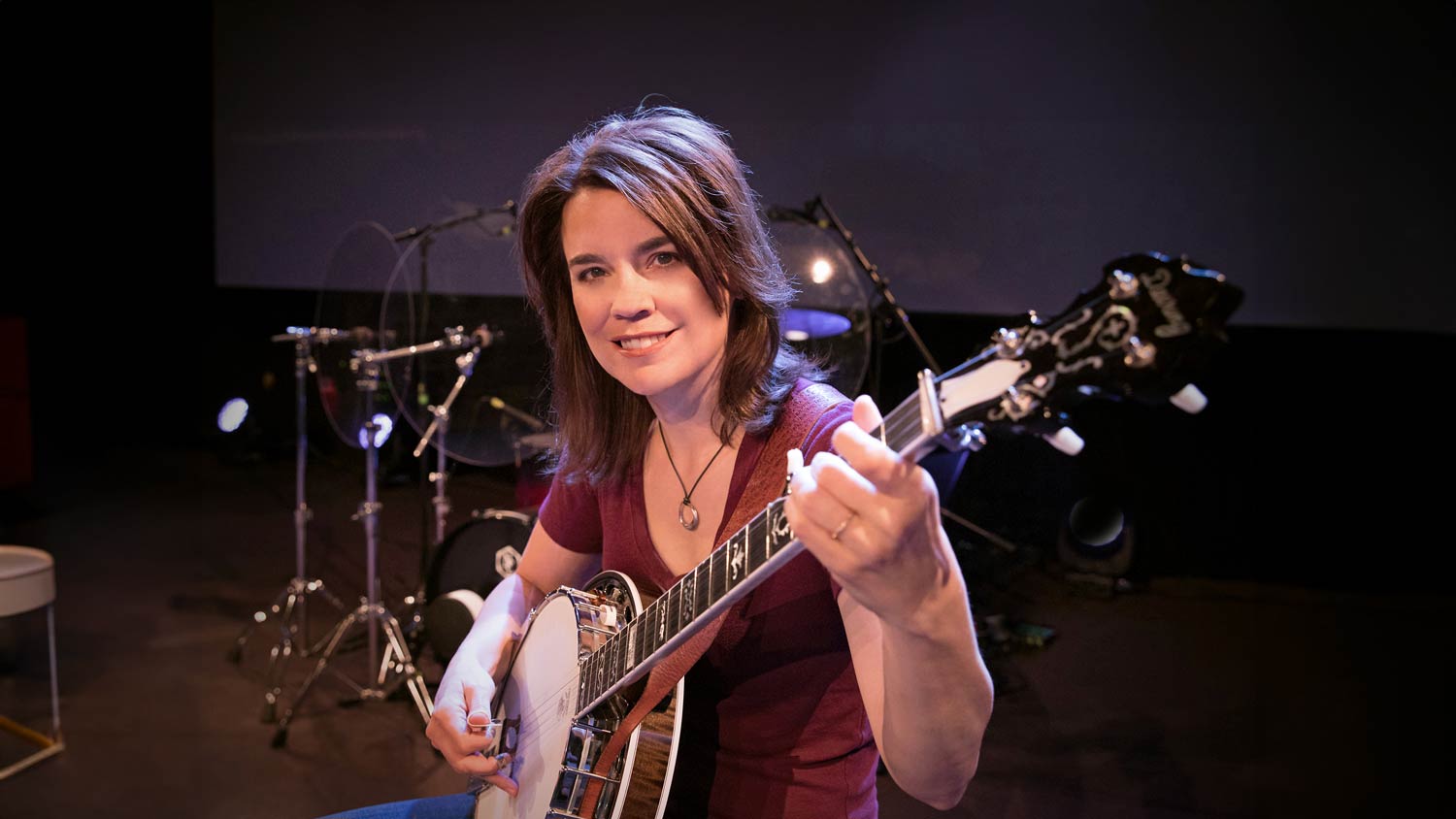Deering introduces Richlite™ to Boston Banjo
All Deering Boston Models to feature Richlite™ fingerboards
As you will have read form our previous article "Deering & Ebony - An Introduction", you will know that Deering faces the challenge of a decreasing availability of Gabon Ebony which we use on finger boards for all of our Deering and Vega instruments. After much testing and deliberation, Deering is extremely happy to announce that with immediate effect, all Boston models will feature finger boards made from a synthetic alternative to ebony called Richlite.
Already widely used in the stringed instruments sector, Richlite is a natural fiber composite made up of mostly recycled paper and a special resin. The finished product is something that bears remarkable similarities to ebony in both the way it reacts to our manufacturing processes and the way the banjo feels, plays and sounds. It is also equally, if not more durable than ebony.
After recently surveying some top players with a specially made Richlite prototype Eagle II, it quickly became apparent that it was near impossible to spot the difference between Richlite and its natural counterpart.
So why would Deering use a synthetic material for a part that has for so long been made from one of natures greatest gifts? Well it comes down to one simple point - Sustainable responsibility. In my last article, I posed the question "Do we blindly continue contributing to the decline of the ebony forests until every last tree is gone? Or do we consider alternative options that will allow us to continue to offer the aesthetics that our customers expect without jeapordising the quality or playability of our instruments?"
The answer is not quite as clear cut as the questions that I asked, but as an industry leader, the one thing that is very clear is that we have a significant responsibility to ensure that we are using natures materials in a controlled and sustainable manner and sometimes this means utilizing other options.
With many synthetic alternatives to ebony on the market, we chose Richlite because:
- Richlite already has a proven track record in the guitar market
- Richlite can be worked in the same way as wood
- Richlite is classified environmentally friendly, utilizing 90% recycled materials and/or FSC Certified materials.
- Production of Richlite does not produce off-gas
- Richlite is 100% made in the USA.
For more information about Richlite, please click here.
All that is left for me to say on this point is "TRY ONE FOR YOURSELF". Please take the time to visit your local Deering dealer and try one of the new Richlite fitted Boston models and see if you can tell the difference!
















I’ve used RICHITE" in a kitchen as a countertop, I experienced a “layering” effect with this product, Is this a concern or issue with the fingerboard radius? Thank You,
Pete
John Meksa said:
" Not only are your banjo superb but,
Your concern about mother earth is the beginning of a new movement in your industry.
John Meksa South Jersey String Band."
I took delivery of a brand new plectrum Eagle II in April 2014 that I special ordered with a Richlite fingerboard in place of the ebony board. In addition to the sustainability issues, what people don’t realize is that most of the ebony still available is not jet black. Much of it has brownish streaks. Some folks may like this look, but I chose the Richlite because I felt a solidly black fingerboard preserved the aesthetics and look that I desired for my new Eagle. Six months into owning it now, I remain very happy with my new banjo and I have received many compliments from other players on it’s beauty and sound. No one has even questioned the material as being anything but ebony. The Eagle II a great banjo for the money.
I’m considering a Boston 5 string for my very first banjo purchase and read about the change over to Richlite finger boards. After reading much about this material on the internet it seems like a viable substitute for ebony. However one aspect that hasn’t been commented on to any great degree is how the Richlite will take to refretting.
Well,. . .I did not know my Eagle II did not have an ebony fingerboard! I cannot tell the difference, and have been very well pleased with this banjo. I wouldn’t part with it. I am glad that I left the heavier banjoes behind in favor of the Eagle II. I am also glad to participate in Deering’s ecological rationale. (I don’t own a ‘Goodtime’ banjo, but really appreciate your decision back down the line to produce a more affordable quality banjo. Keep up the good work in research and development.)
Leave a comment